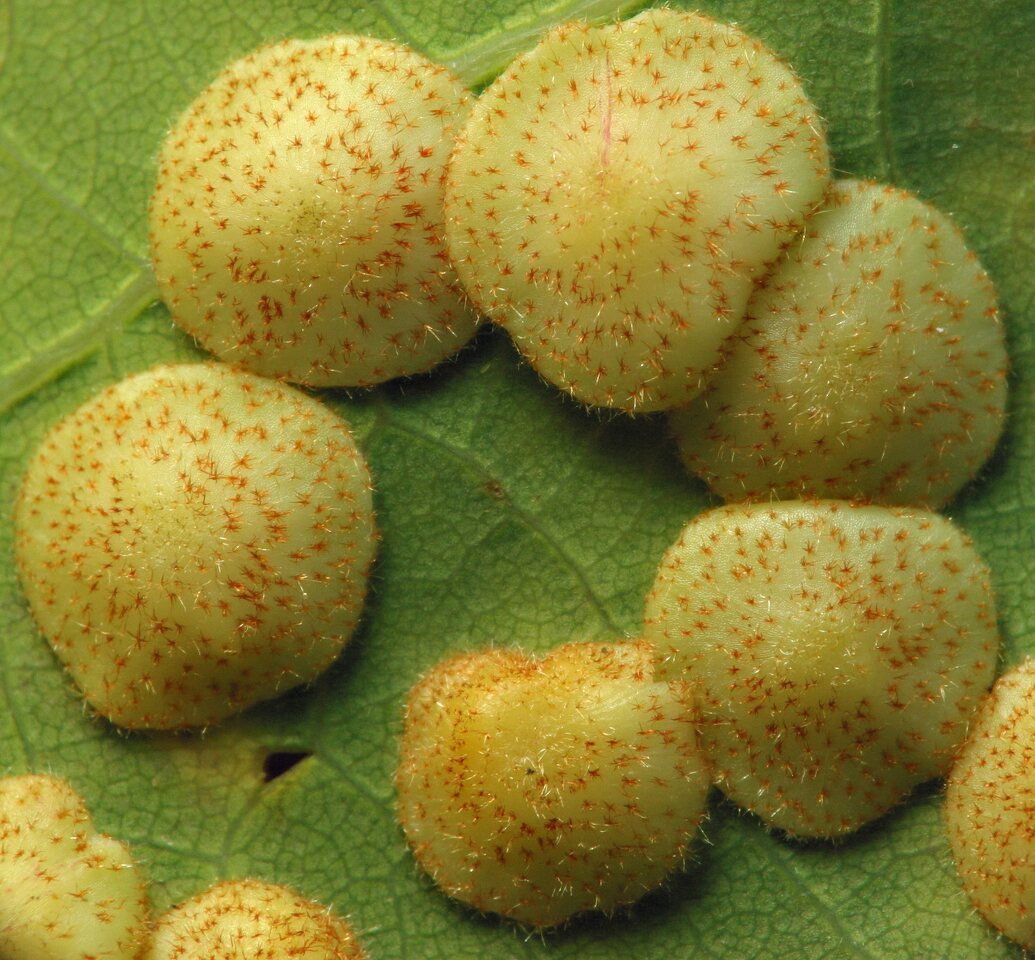
Neuroterus quercusbaccarum · kekiškoji ąžuolinė gumbavapsvė
- common spangle gall vasp
- Eichenlinsengallwespe
- kekiškoji ąžuolinė gumbavapsvė
- ozolu diskveida panglapsene
- rewiś dębowy
Asexual (agamic) larva generation. The spangle gall generation on the underside of the oak leaves are flat discs, with a distinct central elevation, slightly hairy, yellow-green at first and reddish later, attached by a short stalk. These galls are up to 6 mm in diameter, unilocular, unilarval with a whitish or yellow undersurface; they mature in September, detach and fall to the ground before the leaves themselves. The larva continue to develop in the fallen spangle and, protected by the leaf layer, they overwinter. Any spangle galls that remain attached to the leaves dry and die.
‥